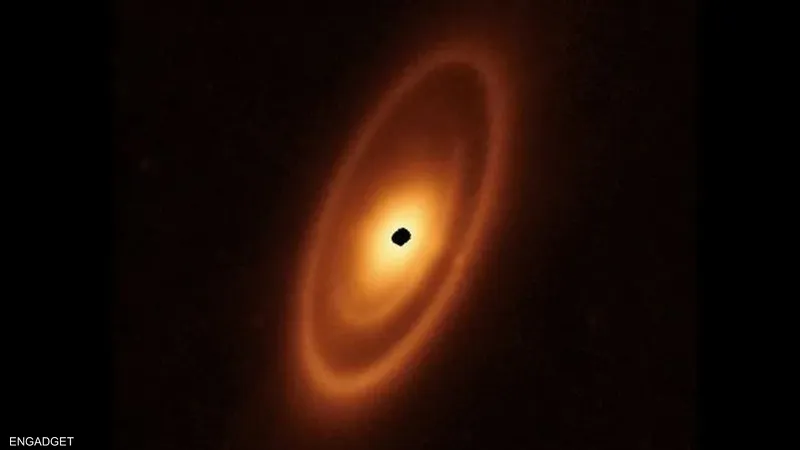Evidence of planets forming in a distant star system

The dusty disk around the "mouth of the whale" was first discovered in 1983
Scientists from the University of Arizona believe they have found evidence of planets forming in a young star system about 25 light-years from Earth.
Astronomers used the James Webb Space Telescope to observe the first asteroid belt seen outside our solar system, uncovering some cosmic surprises along the way.
The space observatory focused on the warm dust that surrounds Fomalhaut , a bright young star located 25 light-years from Earth.
The dusty disk around the "mouth of the whale" was first discovered in 1983 using NASA's infrared astronomical satellite. But the researchers didn't expect to see three interlocking rings of dust extending 14 billion miles (23 billion km) from the star - or 150 times the distance from Earth to the sun.

James Webb's new viewpoint has revealed two inner belts of the young star for the first time, which have not been seen in previous images taken by the Hubble Space Telescope or other observatories.
The detailed image of the dust belts, taken in infrared light invisible to the human eye, showed that the structures are more complex than the main asteroid belt and the Kuiper belt in our solar system.
The main asteroid belt, located between Mars and Jupiter, is where remnants of the formation of our solar system orbit the sun. More icy leftovers can be found in the Kuiper Belt at the edge of our solar system, a donut-shaped ring of small celestial bodies and dust beyond Neptune.
The scientists suggested that there were two deviant discs casting their shadows, and they were very close to each other in the previous observation, so the scientists missed their observation. And with the passage of time they now separated and split into two shadows.
"We've never seen this before on a protoplanetary disk. It makes the system much more complex than we originally thought," said Dr. John Debbs, an astronomer at the Space Telescope Science Institute in the United States, who is also the principal investigator on the study.

The simplest explanation is that the skewed disks are likely caused by the gravitational pull of two planets in slightly different orbital planes. Hubble is assembling a comprehensive view of the system's structure.
Scientists pointed out that the TW Hydrae system gives them an opportunity to see what our solar system was like during its formative years
Scientists said that the suspected planets are located in an area close to the distance between Jupiter and the sun , and the shadows complete one cycle around the star approximately every 15 years.
Scientists added that the outer disk also contains a strange gap at twice the average distance of Pluto from the sun, which may be possible evidence of the existence of a third planet in the star system.
However, they added, it would be difficult to detect any inner planets because their light would be lost in the star's glow and the surrounding dust would dim the reflected light.
Rebecca Nealon, Associate Professor of Physics at the University of Warwick, explained: “The shifting shadows in TW Hydrae present a particular challenge to theorists. But our models were able to show that the most likely explanation is these two tilted disks casting moving shadows. It is possible that TW Hydrae hides two planets in Skewed orbits, perpetuating the mystery of this planet-forming disk.”
Source: websites

